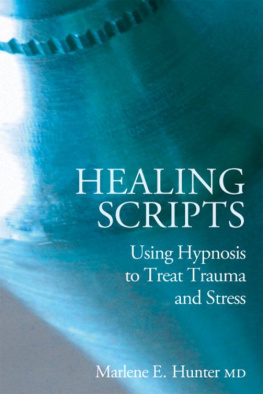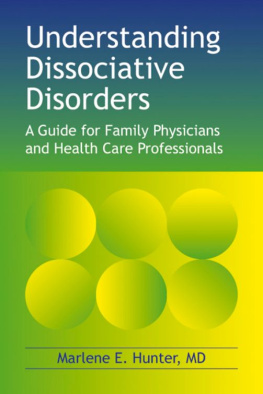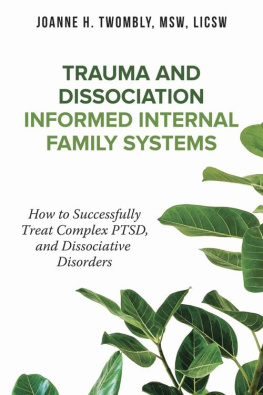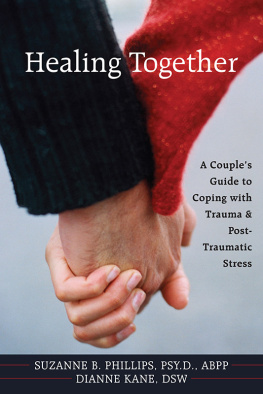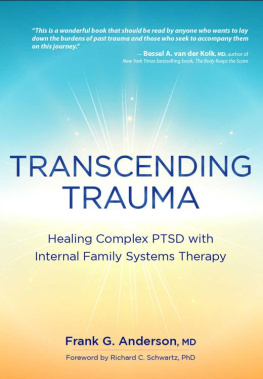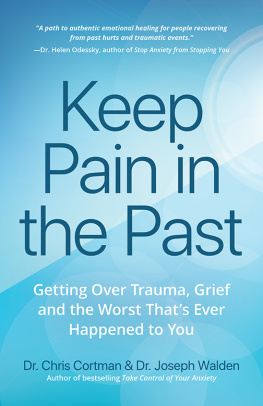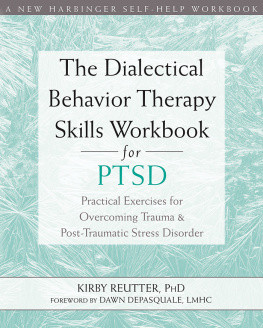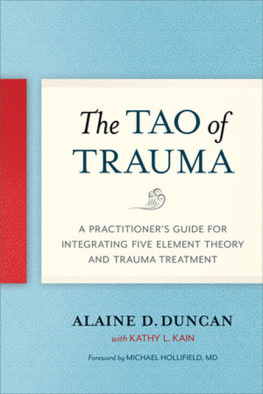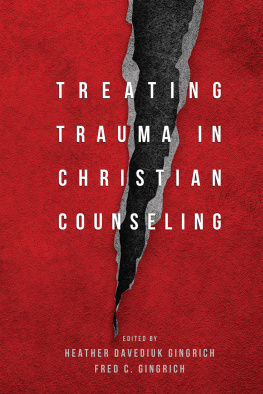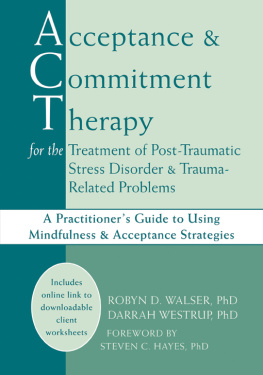The idea of writing a book about the use of hypnosis when working with clients who have suffered severe trauma has been niggling away in the back of my mind for many years. After the publication of Understanding Dissociative Disorders: A Guide for Family Physicians and Health Care Professionals, the need for such a book became much clearer. In particular, the need for such a book specifically for those who have had training and experience both in clinical hypnosis and in working with what are now called trauma-spectrum disorders became almost a mission.
To my knowledge, there is no other book on the use of clinical hypnosis that is dedicated to this specialtythat of helping men and women (and, of course, children) who have suffered and are still suffering from the effects of child abuse, or those who have experienced dreadful trauma through wars and other disasters, and who still live with it in their day-to-day lives.
We need to recognize several aspects of this work:
- It is specialized, and demands specialized training and experience
- Those who suffer from these traumata are particularly vulnerable to misinterpretations and / or subliminal messages from past events
- The healing of trauma always takes time, and the length of time is different for each person that we, as psychotherapists, encounter in our practices
- Those who have suffered trauma are very vulnerable
It is because of the vulnerability of this client group that it is essential that the therapists are well-trained in all aspects of their approach: this includes recognizing and becoming proficient in the various therapeutic approaches that are helpful, and by-passing those approaches which could cause more harm than good or in which they do not have sufficient experience.
I had already been doing clinical hypnosis for several years before I met my first Multiple Personality Disorder client. Indeed, my training in clinical hypnosis was the reason that my colleague, a family physician who was moving out of town, asked me if I would take this woman into my family practice. The client, whom I will call Jayere because that is what I have called her in previous publications, was having terrible headaches, Healing and my colleague thought that continuing hypnosiswhich she (the colleague ) had been doingmight be helpful.
You may have read about Jayere in other publications or heard about her at conferences, because I have spoken about her many times. She, and two other dissociative clients whom I subsequently realized that I had in my family practice, taught me all of the basics about working with the long-term effects of childhood trauma. Of particular importance for this book, however, is the work with hypnosis in the context of traumatized clientsespecially, although not only, those who were so miserably treated when they were young.
It is always important to use hypnosis carefully within the professional milieu. (Of course, it is always important to use it carefully, period, but not all entertainment hypnotists spend time recognizing thatwhich has led to many a lawsuit.)
Employing hypnosis as a therapeutic tool with clients who have endured trauma, however, takes the need for careful appraisal one big step further. Many, if not all, people who have a dissociative disorder or Post-Traumatic Stress Disorder or for that matter any significant psychosomatic problem, are particularly vulnerable to the possibility of being catapulted back into the traumatic situation while in an altered state of consciousness. This can lead to difficulties along many linesexacerbating the traumatic response, for example, or creating an unsought and certainly unwanted new dilemma regarding veracity. In this regard, I had exceptional good luck, because these three clients from my own family practice, who knew me, undertook my education! And in many ways, they protected me from making huge mistakes.
It is because of the potential problems that I have written this book. Its various sections attend to pain in many of its various intrusions; to post-traumatic stress disorders, its seven main symptoms, and the precursors of these: critical incidents and acute traumatic stress disorders; dissociative disorders including dissociative identity disorder (which used to be called Multiple Personality Disorder); the concept of ego states (parts of the personality structure that have specific tasks in the system); other dissociative disorders not so well definedDissociative Disorder Not Otherwise Specified, as the DSM (Diagnostic and Statistical Manual) describes it; grief, especially the kind of deep grieving that does not abate with time but becomes a major psychological difficulty; and a special section on children who have been, or are still being, abused.
You will realize early on that many scripts are very basic indeed, or are simply ways to introduce a hypnotic intervention rather than a fulfilling word-by-word description. Other scripts are more complete, and some have alternative language suggestions. But the basic point is: never attempt to use hypnosis with trauma-spectrum disorders until you are very well schooled in the use of clinical hypnosis. That, at least, I did have when Jayere came so unexpectedly onto my horizon. And the same caution is required for those who offer psychotherapy for such clients. Professional education is a must.
Luckily, I became a member of the International Society for the Study of Multiple Personality and Dissociation at its very first meeting in Chicago in 1984, several years after my training by Jayere and the other two clients in my practice had begun. Subsequently that organization became ISSD (International Society for the Study of Dissociation) and now ISSTD (add Trauma to the name). Although I had learned a great deal from my clients, I needed professional help and found it in those organizations. Other countries have similar organizationsseek them out. And also seek out professional organizations for education in clinical hypnosis, if you have not done that already.
I sold my family practice in 1989 because the work with trauma disorders had overtaken my work as a family physician. Rather than attempt to do three things, and maybe do them badly, it was more important to focus on the two that were so in need of trained professionals. I miss family medicine , but am not sorry that I decided to shift my focus. The subsequent years have brought their own rewards
If the client has never done hypnosis before, then it is important for them to have some introductory sessions on basic relaxation techniques before starting on specific situations such as those described in this book.
I hope that you find this book useful. Hypnosis is a wonderful tool, but sometimes we forget that it is a tool, not magic.
Hypnosis and the relief of pain
For many decades, hypnosis as a means to relieve pain has been a very useful tool. Pain, itself, is a common experience in all walks of life and in all ages and populations. Pain can be a warning signal that something is wronginjury, infection or a severe allergic response during which the person cannot easily take a breath. In all of these situations, hypnosis, when carefully done by a therapist who is well-trained in the various hypnotic techniques, can bring comfort.
Pain that is part of (or the result of) various kinds of trauma, however, has an added component one that is important for us to recognize. That component is the emotional response to the situation in which the pain is experienced, or from which it is derived. The use of hypnosis as onebut only oneof the techniques that can be useful in psychotherapy is exemplified in the following scripts. Perhaps the client (or the therapist) is feeling stuck for some reason; perhaps the emotional aspect has become too intrusive or needs to be recognized. A session, or several sessions, of hypnosis may open the gate again, offering new insights or alternative ways of managing the situation.

